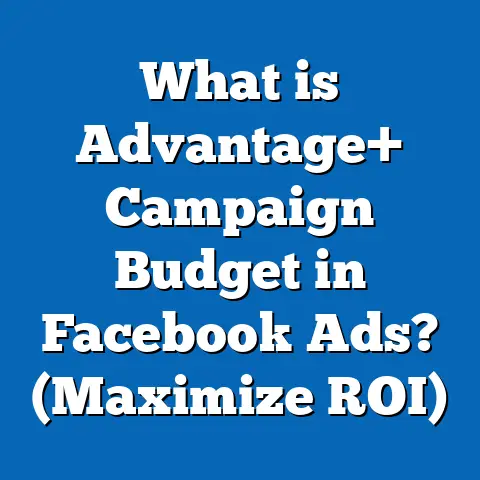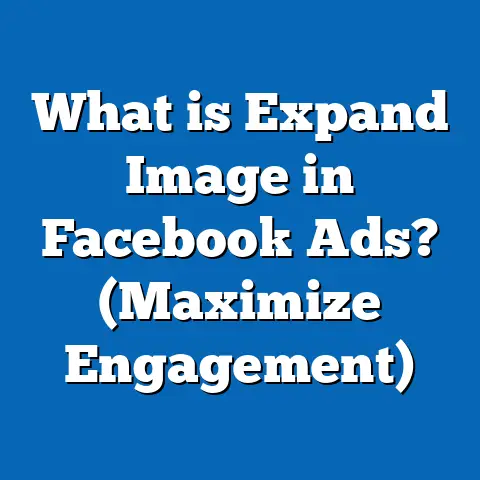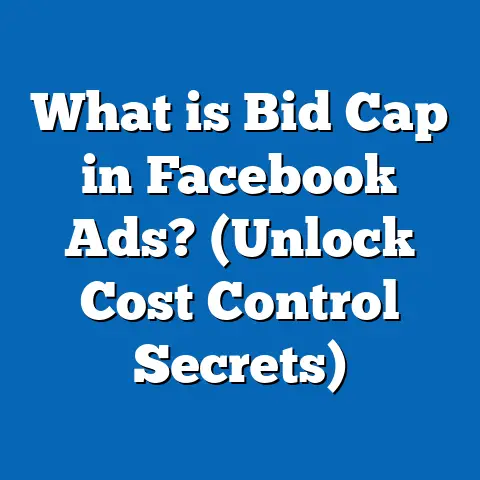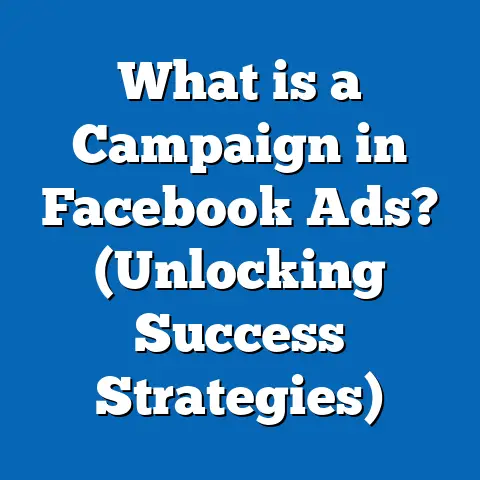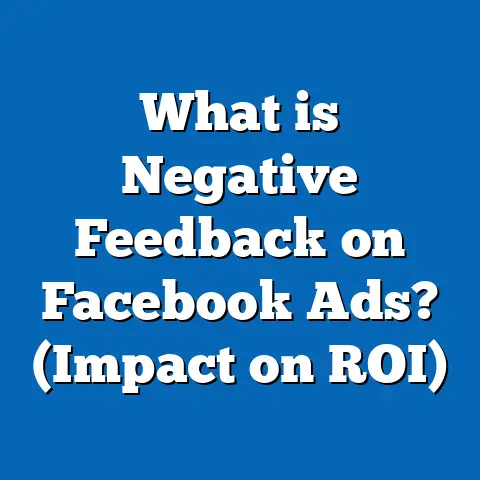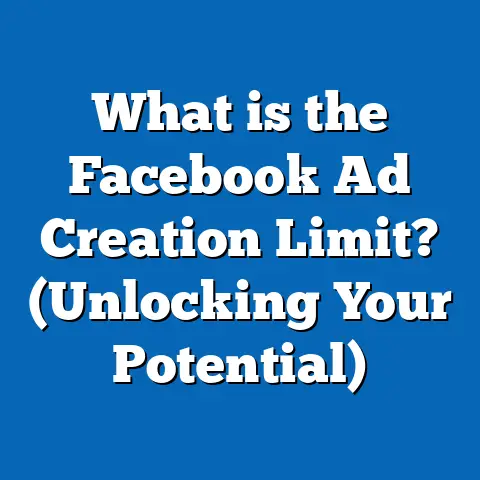What is the Cost of Managing Facebook Ads for Clients? (Risks Explained)
Introduction: Fast Solutions for Managing Facebook Ads Costs
In today’s fast-paced digital landscape, businesses cannot afford to waste time and money on inefficient advertising. Facebook remains one of the most powerful platforms for reaching targeted audiences quickly and effectively. However, managing Facebook ads is not as simple as just setting a budget and launching a campaign. It requires strategy, expertise, constant monitoring, and optimization to ensure every dollar spent delivers value.
What Is the Cost of Managing Facebook Ads?
Defining Facebook Ads Management
Facebook ads management involves multiple layers of work beyond just placing ads:
- Audience Research & Targeting: Identifying who to target based on demographics, interests, behaviors, and custom data.
- Creative Development: Designing ad visuals, writing compelling copy, and testing different creatives.
- Campaign Setup: Structuring campaigns with proper objectives (awareness, consideration, conversion), ad sets, placements, and budgets.
- Optimization: Monitoring performance metrics daily or weekly, adjusting bids, budgets, and targeting for better results.
- Reporting: Providing clients with actionable insights on what’s working and what needs improvement.
- Compliance & Updates: Ensuring ads follow Facebook’s policies and adapting strategies according to platform changes.
Each of these steps demands time, skill, and sometimes additional software tools—factors that influence overall management costs.
Common Pricing Models for Facebook Ad Management
1. Percentage of Ad Spend
This is the most common pricing model where agencies or freelancers charge a percentage of the client’s monthly ad spend. The typical range is between 10% to 20%.
- Example: For a $10,000 monthly ad spend, the management fee could be $1,000 to $2,000.
- Pros: Aligns agency incentives with campaign scale.
- Cons: Can discourage agencies from scaling smaller budgets due to minimum fees.
2. Flat Monthly Fee
Some marketers charge a fixed monthly fee regardless of ad spend. This works well for small businesses with limited budgets.
- Typical fees range from $300 to $2,000 depending on service levels.
- Pros: Predictable costs for clients.
- Cons: May not scale well with larger or more complex campaigns.
3. Hourly Rate
Freelancers or consultants may bill hourly, typically between $50 to $150 per hour.
- Pros: Good for short-term projects or audits.
- Cons: Difficult to predict total costs; can get expensive over time.
4. Performance-Based Fees
Less common but emerging—fees based on campaign performance such as leads generated or sales made.
- Pros: Clients pay for results.
- Cons: Requires clear attribution models and trust between parties.
Tools and Software Costs
Effective Facebook ads management relies heavily on technology:
| Tool Type | Purpose | Typical Cost (Monthly) |
|---|---|---|
| Analytics Platforms | Track conversions & traffic | $50 – $200 |
| Automation & Optimization Tools | Auto-bidding, rules, A/B testing | $100 – $500 |
| Creative Design Software | Ad creation & editing | $20 – $50 |
| Reporting Dashboards | Custom client reports | $50 – $250 |
These costs add to the total management expense and improve efficiency by automating repetitive tasks and providing better insights.
Factors Affecting the Cost of Managing Facebook Ads
1. Client Budget Size
Budget size directly impacts management complexity:
| Budget Size | Typical Management Fee Model | Fee Range |
|---|---|---|
| <$1,000/month | Flat fee | $300 – $500 |
| $1,000 – $10,000 | Percentage of ad spend | 15% – 20% |
| >$10,000 | Negotiated percentage | 10% – 12% |
Larger budgets often involve more granular targeting and testing, increasing workload but sometimes reducing relative fees due to volume discounts.
2. Campaign Complexity
Complex campaigns require more hands-on work:
- Multiple ad sets targeting different audience segments
- Use of advanced formats like video ads or dynamic product ads
- Integration with CRM or e-commerce platforms
- Frequent split testing (A/B testing)
Each added layer increases time spent optimizing campaigns.
3. Industry Competition
Highly competitive industries like finance, insurance, or e-commerce generally have higher CPCs and CPAs. This necessitates more aggressive bidding strategies and creative testing to maintain ROI.
Example: Average CPC in finance can range from $3 to $7 compared to $0.50 to $2 in lifestyle or entertainment sectors (WordStream Data 2023).
4. Geographic Targeting
Targeting multiple countries or regions increases complexity due to different languages, cultures, buying behaviors, and compliance requirements.
Deep Dive: Cost Components Explained
Management Fees in Detail
Management fees compensate for:
- Time spent on strategy research and planning
- Campaign setup including creative creation
- Daily monitoring and optimization
- Performance reporting and client communication
- Ongoing education on platform updates
Average Agency Fees in 2023:
- Small Businesses: $300–$1,000 per month
- Medium Businesses: 15%–20% of ad spend
- Enterprise Clients: Negotiated flat fee or reduced percentage (8%–12%)
Ad Spend: The Largest Expense
Ad spend varies widely by client goals:
| Objective | Average Monthly Spend |
|---|---|
| Local Business Awareness | $500 – $5,000 |
| E-Commerce Conversions | $5,000 – $50,000 |
| Lead Generation | $3,000 – $20,000 |
It’s essential to balance ad spend with management fees to ensure profitability.
Software & Tool Subscriptions
Investing in premium tools improves campaign efficiency but comes at a cost:
- Automated bid management tools help optimize CPA.
- Analytics platforms track user journeys beyond Facebook.
- Reporting tools save time creating client-ready reports.
Example: AdEspresso charges around $99/month for mid-tier plans used by many agencies managing multiple accounts.
Risks in Managing Facebook Ads for Clients
1. Over-Spending Without Return
Inefficient campaigns can burn through budgets without generating leads or sales. According to WordStream:
- 76% of businesses struggle with managing paid social campaigns effectively.
- Over 30% report wasting over 25% of their ad budget on poorly optimized ads.
Without proper monitoring and expertise, this risk escalates quickly.
2. Account Suspension or Ban
Facebook enforces strict advertising policies:
- Ads violating content guidelines risk disapproval.
- Repeat violations can lead to account suspension or permanent ban.
- Suspensions disrupt campaigns and affect client trust.
Regular policy reviews and compliance checks are critical risk mitigation steps.
3. Data Privacy and Compliance Risks
Regulations like GDPR (Europe) and CCPA (California) impact how user data can be collected and used:
- Non-compliance risks costly fines ($10 million+ in some cases).
- Facebook’s own changes (e.g., iOS privacy updates) affect tracking accuracy.
Managers must stay informed on legal developments and adapt accordingly.
4. Miscommunication Leading to Unmet Expectations
Lack of transparency about goals or budget limits can cause friction between agencies and clients:
- Unrealistic expectations about CPC or CPA
- Disagreements over campaign direction
- Delayed reporting causing confusion
Clear contracts and regular updates minimize this risk.
Case Study Analysis: Real Results vs Costs
Case Study #1: E-Commerce Brand Boosts ROI Through Expert Management
Client Profile: Medium-sized fashion retailer
Initial Situation: Spent $12,000/month on Facebook ads with an internal team but struggled with high CPA ($60).
Agency Engagement: Hired an agency charging 15% management fee ($1,800/month).
Actions Taken:
- Implemented detailed segmentation targeting based on purchase behavior.
- Used dynamic product ads with creative rotation.
- Set up automated rules to pause low-performing ads immediately.
Results After 3 Months:
| Metric | Before Agency | After Agency |
|---|---|---|
| Monthly Ad Spend | $12,000 | $12,000 |
| CPA | $60 | $28 |
| Monthly Revenue | $40,000 | $56,000 |
| ROI (Revenue/Ad Spend) | 3.3x | 4.7x |
Insight: The management fee was justified by significant CPA reduction and increased revenue.
Case Study #2: Startup Faces Challenges With DIY Facebook Ads
Client Profile: Early-stage SaaS startup
Situation: Founder managed Facebook ads alone with a monthly budget of $2,500.
Challenges:
- Lack of optimization skills leading to wasted clicks.
- Inconsistent reporting making it hard to assess performance.
- Account temporarily suspended due to policy violation on ad copy.
Outcome: After switching to a professional agency charging a flat fee of $500/month plus ad spend:
- Account reinstated with compliant ads.
- CPA dropped from $45 to $25.
- Lead quality improved through better targeting.
Comparing Facebook Ads Management With Other Platforms
Understanding how Facebook stacks up against other platforms helps set cost expectations:
| Platform | Average CPC (2023) | Typical Management Fee | Complexity Level |
|---|---|---|---|
| Facebook Ads | $0.50 – $2.00 | 10%-20% of spend | Medium |
| Google Ads | $1.00 – $5.00 | 15%-25% of spend | High |
| LinkedIn Ads | $2.00 – $7.00 | 15%-20% of spend | High |
| TikTok Ads | $0.50 – $1.50 | 10%-18% of spend | Medium |
Facebook offers broad targeting features and lower average CPC compared to LinkedIn or Google Search but demands ongoing optimization due to algorithm changes.
How to Minimize Risks While Managing Costs
Clear Goal Setting & KPI Alignment
Start by aligning expectations on key metrics such as:
- Cost per lead (CPL)
- Return on ad spend (ROAS)
- Customer acquisition cost (CAC)
Regular Audits & Performance Reviews
Conduct monthly audits assessing:
- Budget allocation efficiency
- Audience overlap or fatigue
- Creative performance trends
Adjust campaigns accordingly to avoid overspending on underperformers.
Compliance Checks & Policy Training
Stay updated with Facebook’s ad policies:
- Use Facebook Blueprint courses.
- Subscribe to industry newsletters focused on platform updates.
This helps prevent bans or account restrictions.
Use Automation Wisely
Leverage automated bidding strategies but monitor results closely. Blind automation can cause overspending if not properly configured.
Advanced Strategies for Cost Optimization in Facebook Ads Management
Audience Segmentation & Retargeting
Segmenting audiences based on behavior improves relevance:
- Website visitors who didn’t convert
- Past customers for upselling
- Lookalike audiences based on high-value customers
Retargeting generally yields higher conversion rates at lower CPA.
Dynamic Creative Optimization (DCO)
DCO automatically tests combinations of images, headlines, and calls-to-action (CTAs) to identify top performers without manual effort.
Research shows DCO can improve CTR by up to 30%, reducing cost per result significantly.
Bid Strategy Adjustments
Facebook offers multiple bidding options:
| Strategy | Description | Use Case |
|---|---|---|
| Lowest Cost | Automatically gets most results | When budget is fixed |
| Cost Cap | Controls maximum CPA | When controlling cost is priority |
| Bid Cap | Sets bid limit | For high competition scenarios |
Choosing the right strategy depends on campaign goals and market dynamics.
Practical Examples & Templates for Agencies
Sample Pricing Proposal Structure
- Management Fee: 15% of monthly ad spend
- Setup Fee: One-time fee of $500 for initial campaign setup
- Reporting: Bi-weekly reports delivered via email
- Communication: Weekly strategy calls
- Additional Services: Content creation billed separately at hourly rates
This transparent structure helps set client expectations clearly.
Campaign Optimization Checklist
Use this simple checklist during weekly reviews:
- Review CTR & CPC trends across all ad sets
- Pause underperforming creatives (<0.5% CTR)
- Test at least one new creative variation weekly
- Adjust audience targeting based on conversion data
- Check frequency levels (>3 may indicate audience fatigue)
- Review bid strategy effectiveness monthly
- Analyze landing page performance metrics (bounce rate/conversion rate)
Industry Trends Impacting Facebook Ads Management Costs in 2024–2025
AI-Powered Automation Growth
More agencies are using AI tools for predictive analytics and automated bid adjustments—reducing manual workload but requiring investment in new tech subscriptions.
Privacy Changes Affecting Tracking & Attribution
Apple’s iOS privacy updates limit data sharing impacting retargeting accuracy; marketers need alternative strategies like first-party data collection or broader targeting approaches.
Increased Focus on Video Ads & Interactive Content
Video ads now dominate Facebook feed engagement metrics; producing high-quality video content adds cost but improves performance significantly.
Rise of Meta Advantage+
Facebook’s new automated campaign solution combines machine learning with audience targeting—agencies must decide when to use full automation vs manual control based on client needs.
Final Thoughts & Clear Takeaways for Marketers & Business Owners
Managing Facebook ads costs effectively requires understanding both the direct expenses (ad spend & management fees) and indirect costs (software tools, compliance risks). While fees vary widely depending on campaign complexity and budget size, investing in expert management often pays off through improved ROAS and reduced wasted spend.
Key takeaways:
- Choose pricing models aligned with your business size and goals.
- Use data-driven strategies like audience segmentation and automation tools wisely.
- Stay current with platform policies and privacy regulations.
- Communicate transparently with clients about expectations and results.
- Regularly audit campaigns to identify inefficiencies early.
By following these principles, marketing professionals can deliver fast solutions that maximize client budgets while minimizing risks associated with Facebook advertising management.
If you want me to break down any section further or add more case studies/statistics/examples, just let me know!

